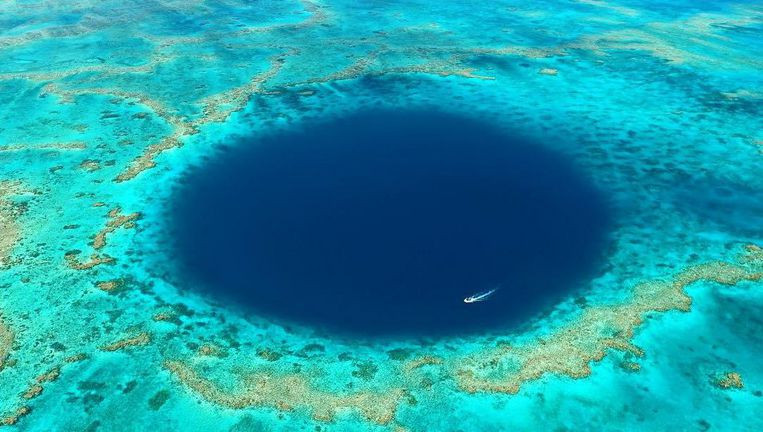The green hole is 20 meters deep off Australia
Scientists found that a green hole off Australia has a healthy coral reef despite the mass death of corals around.
A group of scientists scouted a rare deep blue hole (Blue Hole) in the Great Barrier Reef. The green hole is located more than 200km from Daydream island off the northeast coast of Australia, reported Sun on October 31.
Previously, researchers knew very little about this green hole. Preliminary findings suggest that although coral bleaching spreads across the region, this is the home of healthy coral populations.

The green hole off Australia looks from above.(Photo: Instagram).
Johnny Gaskell, a marine biologist in Whitsundays, Australia, shared a photo of a green hole on Instagram.
"Geologists who once described this green hole may be older than the famous Big Green Hole in Belize. It is located in one of the least-explored places of the Great Barrier Reef, more than 200 km from Daydream Island. To get there, we had to move in the night for more than 10 hours and watch the tide time very well. But the effort was worth it! " , Gaskell shared.
The divers only dive to a depth of more than 20m inside the green hole, before meeting the sediment layer to the center of the pit.
Finding healthy corals in the blue hole can be a surprise to experts, after a series of discolored corals appear more and more in the Great Barrier Reef. The coral here has experienced two consecutive mass loss events in 2016 and earlier this year, causing experts to be concerned about the possibility of survival after the events of climate change caused by reefs.
Status of discolored coral lasts up to 6 weeks. Coral roots can recover if the temperature drops and the seaweed returns. But strong discolored corals will die and be covered by seaweed. Finding healthy corals in the blue hole gives hope for the resilience of the Great Barrier Reef.
The green hole is more than 200km from Daydream island.(Video: Instagram).
A green hole is a sinking hole beneath the sea surface. This type of pit formed during the ice age, when sea level was 100 - 120m lower than the present.
Over time, water flowing from the glacier begins to dissolve the limestone foundation, forming sinkholes with large caves below. The arch of these caves will eventually collapse, leaving the mouth of the deep hole. As the glacier in the ice age gradually melted, the water filled the deep holes on the ground, creating today's blue hole.
Although scientists find green holes around the world, the most famous example is probably the blue hole in Belize, which is more than 30 meters wide and 125 meters deep, thought to be the largest in the world.
- 7 most impressive deep holes in the world
- Deep sinks suck like bottomless caves in China
- A 1 meter deep fire pit keeps on hurting the scientific community
- Hear sound underground from deep hole Kola
- Close-up of the 'super deep hole' moon
- Mysterious wormhole in America
- Why is there a deep diver without oxygen tanks?
- Deathhole 50m appeared after the flaming explosion in Russia
- Strange phenomena after a disaster
- Hundreds of thousands of green jellyfish stranded in Australia
- Virtual cloud holes in Australia sky
- Mysterious deep holes after the storm
 Surprised: Fish that live in the dark ocean still see colors
Surprised: Fish that live in the dark ocean still see colors Japan suddenly caught the creature that caused the earthquake in the legend
Japan suddenly caught the creature that caused the earthquake in the legend A series of gray whale carcasses washed ashore on California's coast
A series of gray whale carcasses washed ashore on California's coast Compare the size of shark species in the world
Compare the size of shark species in the world